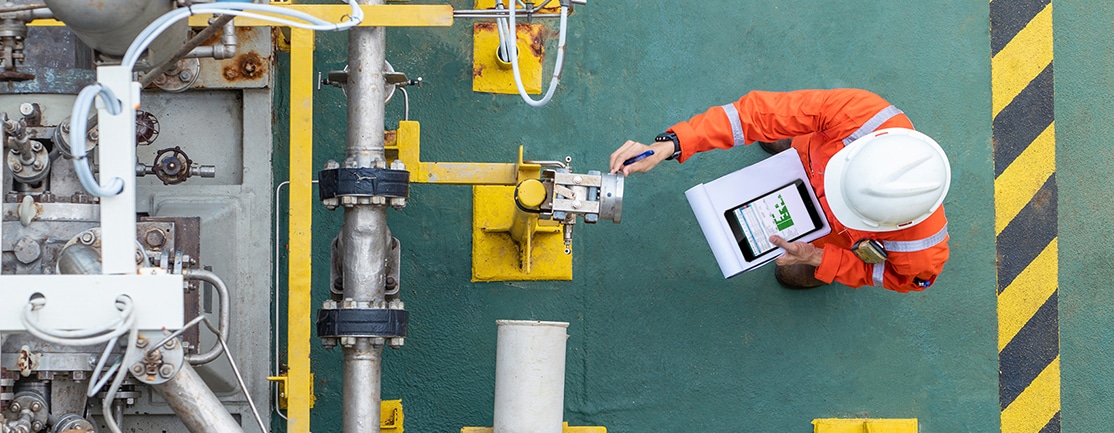
As manufacturing organizations navigate the new normal and accelerate their digital transformation journeys, OEE (Overall Equipment Effectiveness) remains as important as ever. This critical best practice is one of the most effective performance measurements in modern manufacturing facilities – by optimizing OEE, you can reduce costs, increase productivity and boost competitiveness.
From 27 May to 10 June 2020, over 440 delegates from 155 organizations – including Diageo, Lion, Beam Suntory, Distell and Bayer Crop Science – attended Improving your OEE, a TRACC Community webinar series hosted by Dr Dino Petrarolo, Senior Vice President, CCi, Asia-Pacific and facilitated by Adrian Pym, Regional Operations Director: CCi, Asia-Pacific. Featuring practical guidance and leading-edge content, this three-part series focused on defining OEE, executing the improvement plan and sustaining the gains for the long term.
Described as ‘the gold standard’ for manufacturing productivity, OEE is a strategic measure of the overall effectiveness of a site, production line or machine that can be used to make losses more transparent, highlight areas for improvement and improve capital utilization, cost and sales growth. Dino introduced the series by discussing the generic conflicts in manufacturing and explaining how efficiency and effectiveness go hand in hand. He noted that efficiency cannot be chased at the expense of system effectiveness, and that efficiency improvement processes must be applied in the context of a systemic approach.
Webinar 1: Defining OEE
Dino introduced the series by discussing the generic conflicts in manufacturing and explaining how efficiency and effectiveness go hand in hand. He noted that efficiency cannot be chased at the expense of system effectiveness, and that efficiency improvement processes must be applied in the context of a systemic approach.
Adrian then looked at the OEE fundamentals and explained how a 1% improvement in OEE can result in reduced variation and quality risks; reduced production upsets and waste; and improved energy efficiency. He also listed the six major losses relating to OEE – including breakdowns, setup and adjustments, small stops, reduced speed, startup rejects and production rejects – and provided examples of each. He concluded the webinar by looking at the challenges involved in deploying OEE as well as the recommended tools and techniques to plan the improvements.
Webinar 2: Executing the plan
The second webinar focused on executing the OEE improvement plan and Dino began the session by providing an example of a bottling company that improved system performance despite OEEs being maintained or slightly reduced. Adrian then went on to discuss four critical aspects of executing the OEE plan: selecting the right people for your project team; introducing basic practices (such as setting up an effective Daily Management System); targeting quick wins and addressing systemic issues, such as reliability. He examined the concepts of ‘running the business’ and ‘improving the business’ which involve having parallel structures in place to run and improve the business simultaneously, ensuring that the organization can compete effectively and consistently shift and improve its performance. Adrian also looked at an example of a rapid deployment structure that can be implemented to drive profit improvement projects, effective governance, more efficient changeovers and improved asset care.
He concluded the session by discussing two key drivers of world class-performance improvement: consistently standardizing practices and continuously improving those standards. “Operational excellence systems deliver results through holistic improvement frameworks that focus not on current performance, but on long-term, sustainable, market-beating performance,” said Adrian. “Best practice implementation and constantly defining what good looks like are core levers to drive culture change and deliver lasting results.”
Webinar 3: Sustaining the gains
The final webinar of the series focused on sustaining OEE gains for the long term. Adrian discussed the importance of making Pareto dynamic and effectively implementing change management best practices. He looked at five high-level loss categories and their quantifications, including lost production time, labor losses, unnecessary inventory, material waste and yield loss and wasted operational expenses, and explained how Pareto charts for losses – and an unrelenting focus on loss and waste in general – set high-performing companies apart from the rest.
Finally, Adrian highlighted the value of applying the principles of change management to sustain OEE gains. “Change cannot be implemented effectively without the support of key stakeholders,” he said. “It is important to identify the key stakeholders early in the process, to analyze how the change will affect them and then to plan and manage their involvement carefully.”
To find out more about optimizing your OEE and to view the webinar series on demand, click here.
